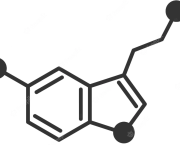
Synthetic meat
 8 min
8 min
Synthetic meat
Production method and scientific reality.
Homo sapiens have fed on animal flesh since the dawn of the species; in fact, there are archaeological finds of animal bones hollowed out by tools dated as far back as 3.4 million years ago, the period when our hominid predecessors began to colonize the world. According to some theories, the shift from herbivorous to omnivorous diets allowed hominids to accumulate greater amounts of energy in ever shorter time frames, speeding up the slow process of digesting plant fibers. Nowadays these evolutionary changes remain unchanged in our species, but the modality of meat gathering has changed; in fact, we are no longer hunter gatherers, but are consumers of farmed products. Today's global meat consumption is 365 million tons per year (2018), with the U.S. and Australia ranking first as the world's largest consumers (average of 120Kg per person each year). As the economic situation of poorer countries improves, these figures will follow a trend of steady increase in the near future.
Bearing in mind that industrial meat production also belongs to those production sectors that have the greatest impact on the emission of greenhouse gases, how is it possible to combine the need to provide our bodies with the proteins necessary for its proper functioning, especially those of the B group involved in the production of red blood cells and the functioning of neurons, with the reduction of greenhouse gases emitted by human activities?
Some pharmaceutical companies and start-ups are proposing lab-grown meat as a solution to this global crisis, creating a product that bypasses today's agricultural realities. Through tissue regeneration techniques these are looking for the perfect recipe to grow animal cells without going through the life stage.
The process begins with stem cells, which are a group of cells capable of modifying themselves and taking over the role of virtually every cell that makes up an animal. These stem cells are collected from the animals whose meat is to be produced, which are often cows to cite one example. These multipotent cells are then isolated and placed in a bioreactor along with other various chemicals such as amino acids, growth hormones, and an element necessary for cell duplication known as fetal bovine serum. This cocktail of substances allows cell proliferation and maintenance of cell life. The proper supply of growth factors to the bioreactor allows the stem cells to differentiate into muscle or lipid tissue cells, depending on the desired result. Muscle cells naturally tend to unite by forming myotubes, i.e., the components of muscle fibers; these, however, given how extremely complex the level of tissue organization is, are not achievable and so myotubes are mixed together and the only achievable results are agglomerates, wich means these can form nuggets or burgers of beef, chicken, or fish.
However, "animal free" meat has a prominent worrying aspect, which is that it is not actually animal free. In fact, one of the main components of lab-produced meat is, as we mentioned above, Fetal Bovine Serum (known by the acronym FBS in English), which can only be collected from bovine fetuses. In slaughterhouses, it is the practice for killed pregnant cows to be dissected and the (still-living) fetus quickly extracted from the carcass and bled out without it dying, which would damage the quality of the serum refined from the blood. No non-animal medium has yet been identified to fill the role of FBS in laboratory meat production, although its discovery would lead to a breakthrough in the production process, especially from an ethical point of view.
The role of the FBS in the bioreactor is to prevent stem cell apoptosis (i.e., programmed cell death), an event that occurs naturally in all living organisms and allows the organism to eliminate all those cells that are differentiating in the "wrong place," thus allowing proper tissue development. The apoptosis system must therefore be inhibited during meat production in a bioreactor, and this is precisely the effect that fetal bovine serum has. The incredible aspect of FBS is its universality, meaning that it can be used in the chemicals cocktail to create every cell type, and for every animal. Both fat and muscular tissue of cow, chicken, fish ecc... Other types of serum exist, but none is as versatile as bovine serum. It is an absolutely necessary ingredient in growing meat in the laboratory, the need for which automatically eliminates some of the assumptions that led to the need to grow meat in the first place.
Current laboratory meat production capacity is neither economically nor environmentally sustainable: 50L of bovine serum is required to produce a single burger, when 150ml to 550ml of serum can be extracted from a single fetus, depending on the stage of development. Doing the math it turns out that this burger requires the death of a minimum of 90 pregnant cows, up to a maximum of 330. So until a viable substitute for FSB is found, perhaps of plant origin, lab-grown meat will not be profitable but rather a waste. The search for a substitute is not so simple, however, as FSB contains 1800 different proteins and about 4000 metabolites, and some of these components are extremely expensive, citing for example the growth factor TGS-B whose price is around $1 million per gram.
There are so far only hyperspecific sera by cell type, or sera originated from the blood of human donors. it is therefore self-evident that the costs of the raw materials required to produce the meat in the laboratory are totally uncompetitive, not to mention the need for infrastructure, energy and water. The current price estimate for 0.45kg (1 pound) of this product is around US$10,000 as 1 liter of FSB costs about US$700, and synthetic alternatives will only be even more expensive.To create a single kilogram of meat requires 5,000 liters of potable water, contained in huge bioreactors because the replicating cells need to be kept in extremely low densities.
The cells in culture then have no immune system, and so any virus or bacteria that comes into contact with them will find an extremely fertile breeding ground for its proliferation. Entire sterile facilities, typical of pharmaceutical environments rather than facilities devoted to food production, are therefore required. An additional problem of no small importance is taste; in fact, the meat we are used to has well-defined percentages of fat and muscle parts, and recreating the same conditions in the laboratory is not an easily met challenge.
In conclusion, the production of synthetic meat in quantities accessible to the general public is to date a mirage, both because of cost and ethical issues related to FSB, and the sale of such products is an extremely unlikely event in the near future.However, this should not justify the current rates of production, consumption and waste of animal meat, which are not sustainable for the environment nor for our health.It is therefore necessary to look for meat produced by traditional techniques, perhaps more expensive than what we find in the supermarket but certainly healthier in every respect.









 English
English
 Français
Français
 Deutsch
Deutsch
 Italiano
Italiano
 Español
Español



 Contribuisci
Contribuisci










 Puoi sostenere i tuoi scrittori preferiti
Puoi sostenere i tuoi scrittori preferiti





